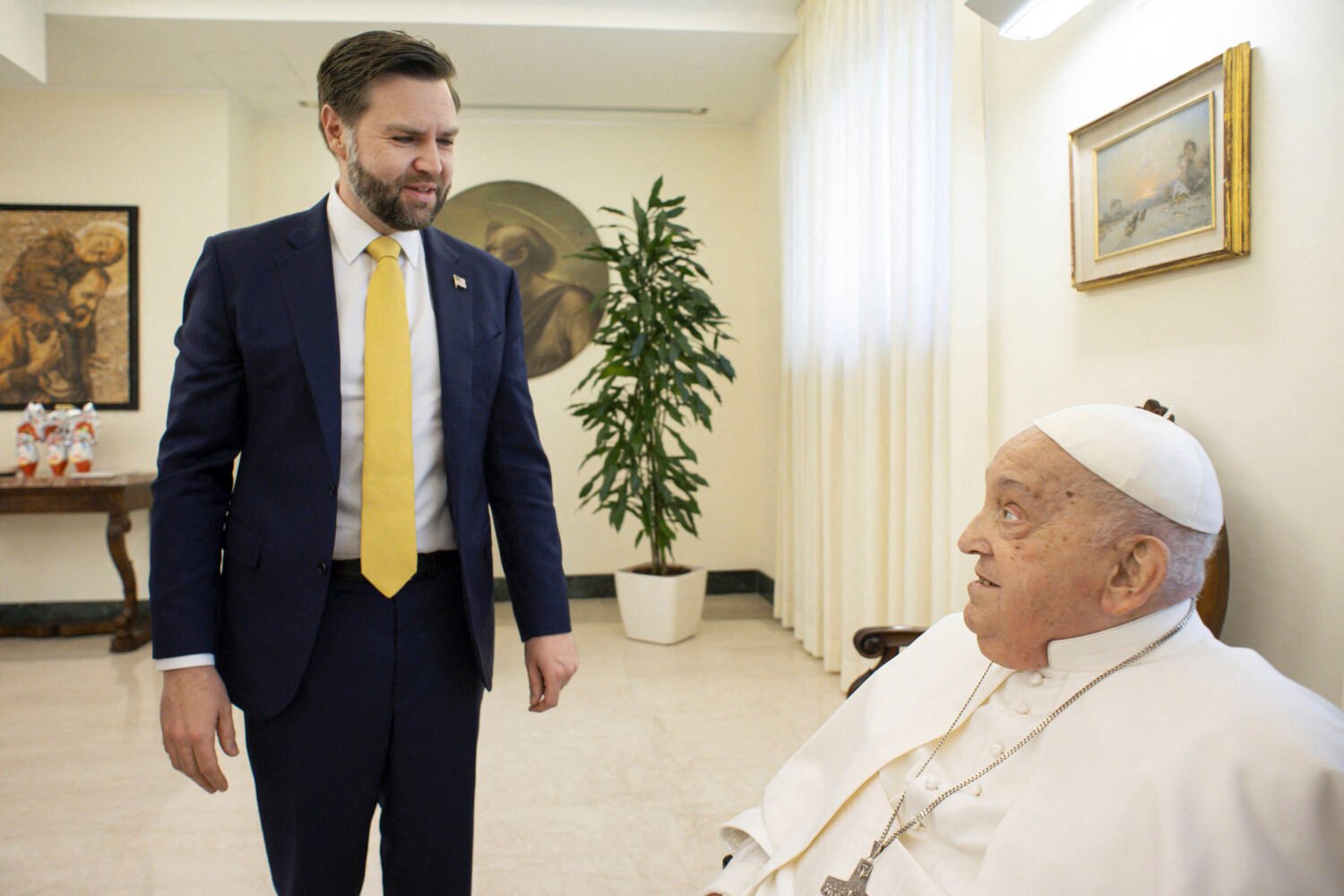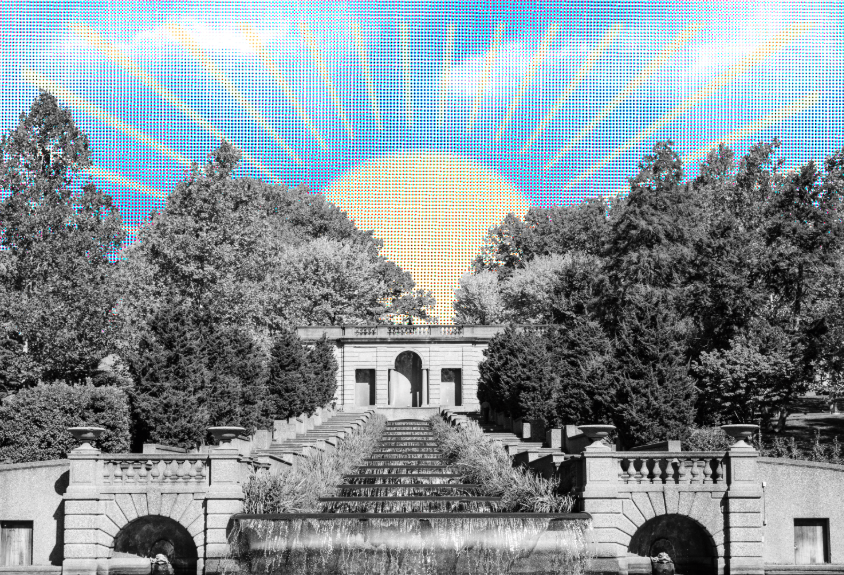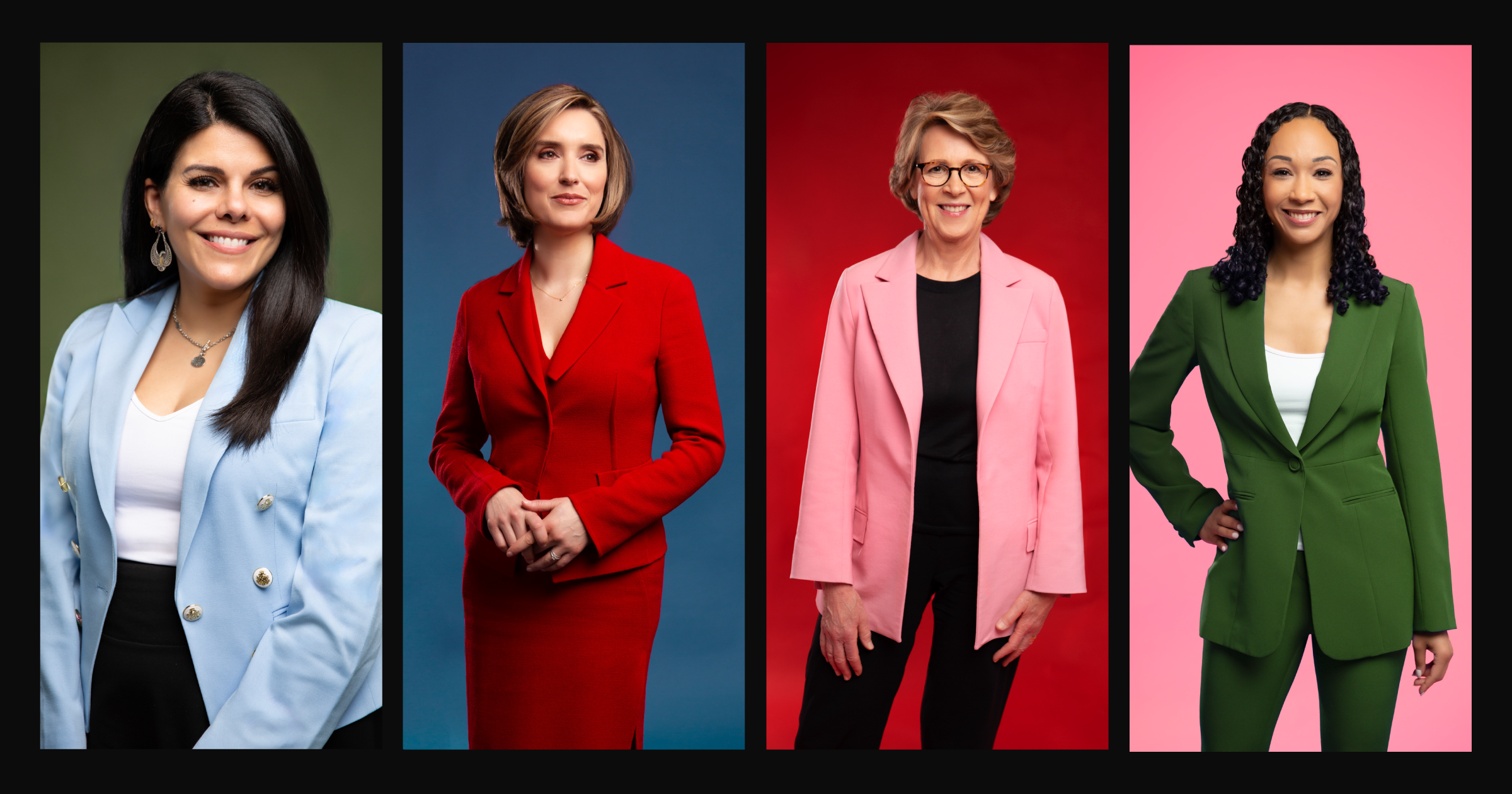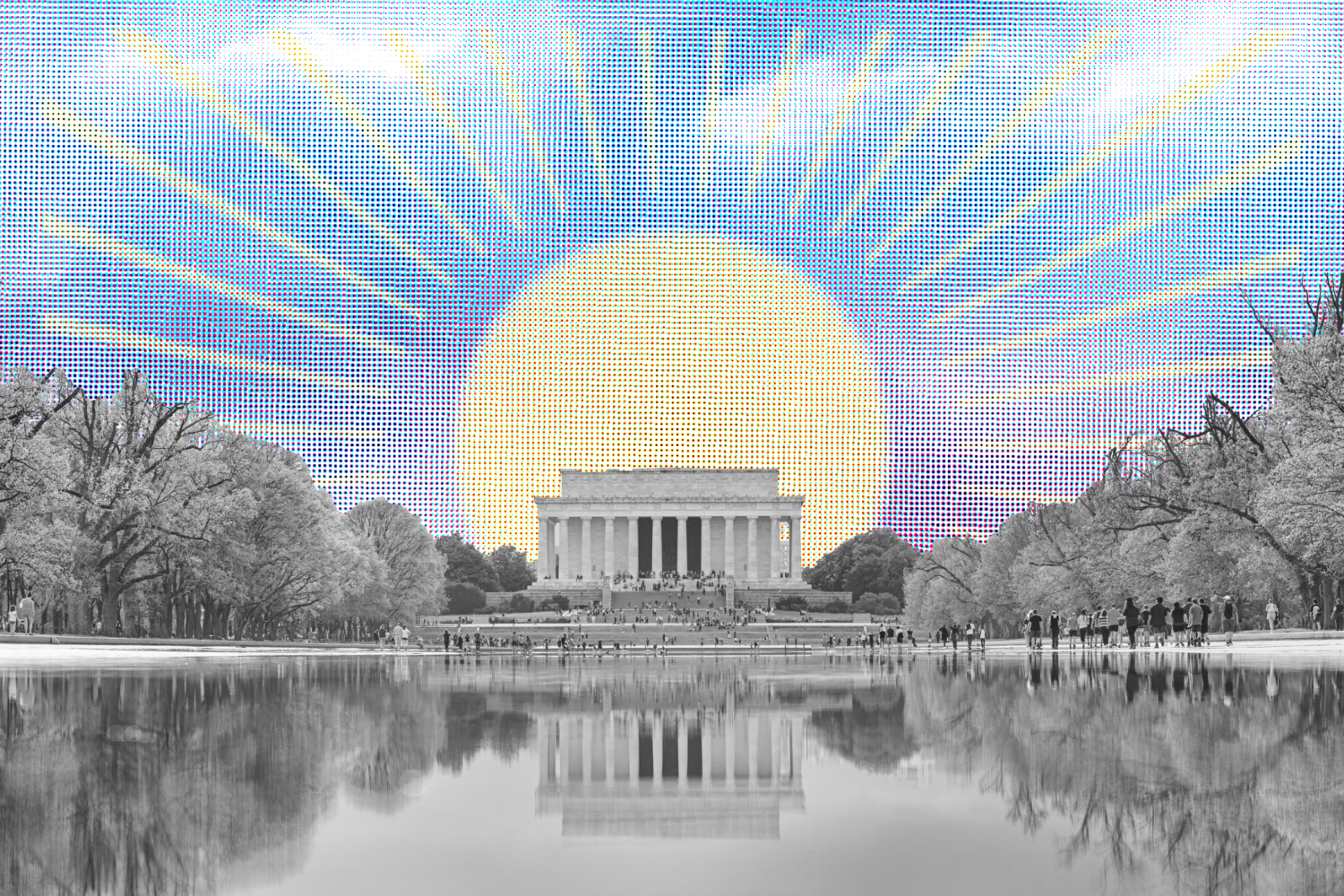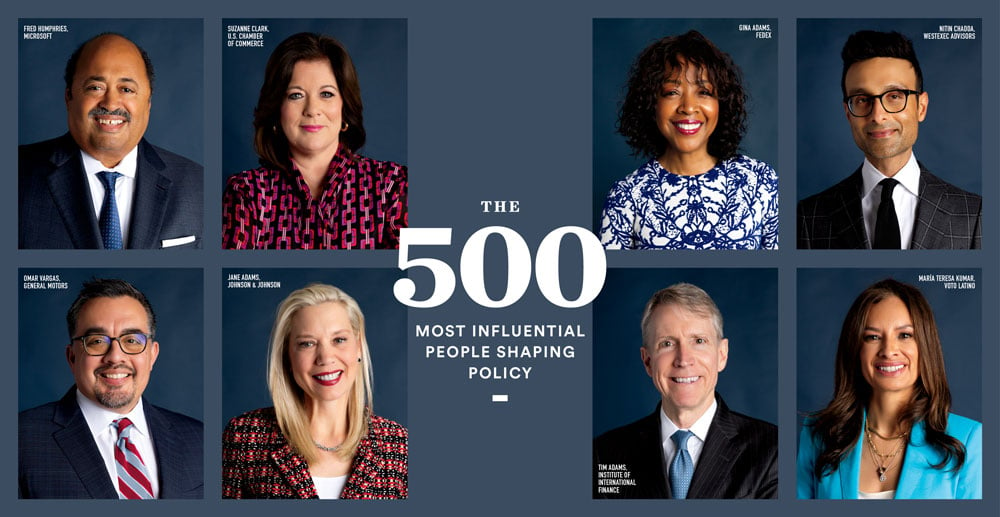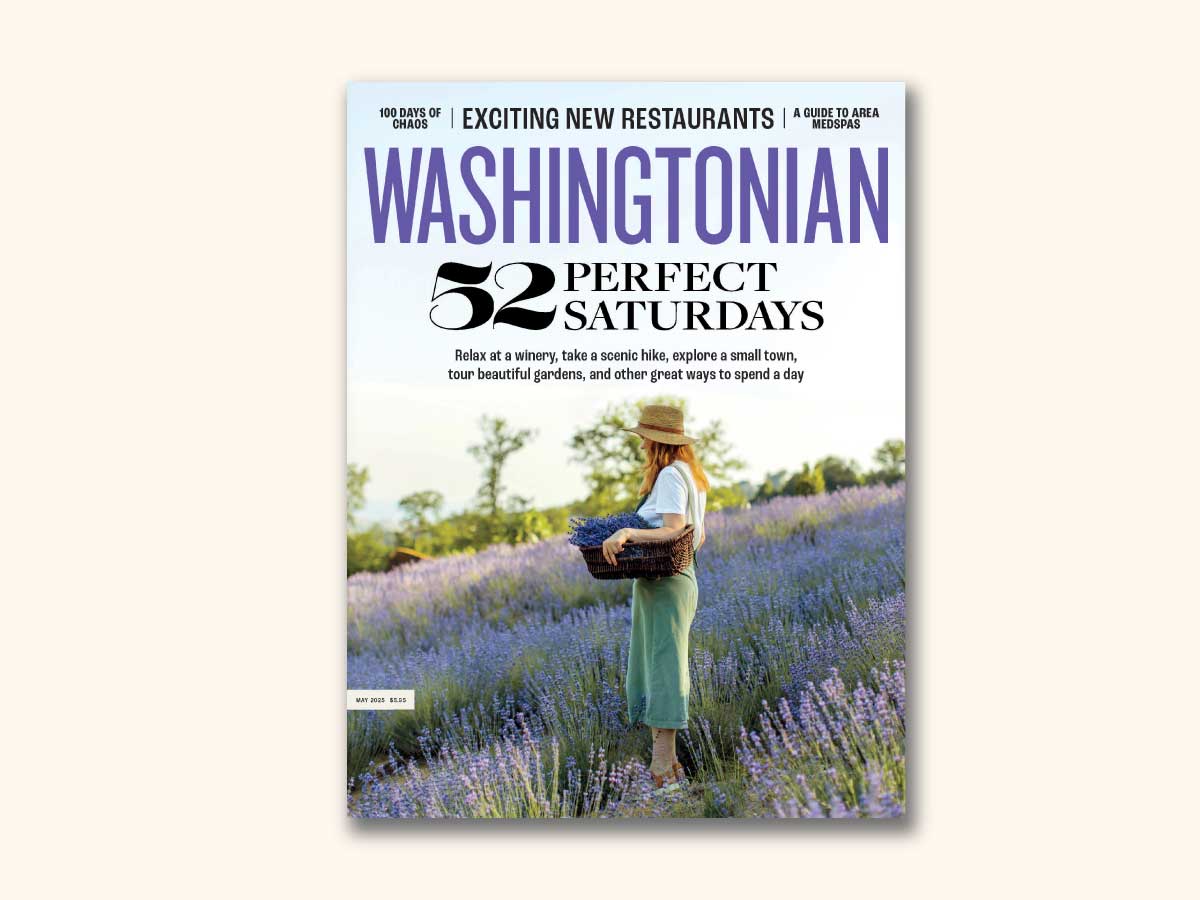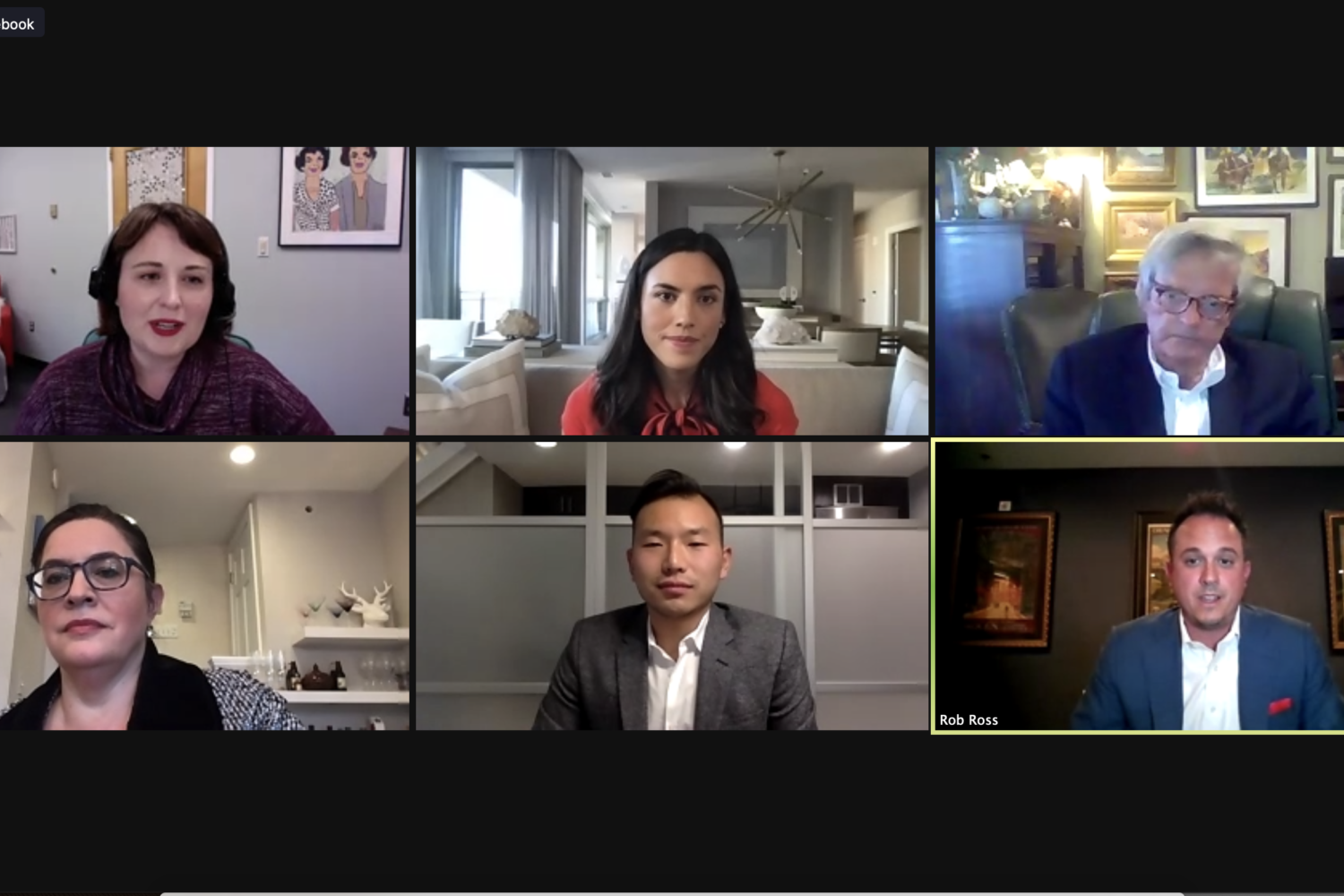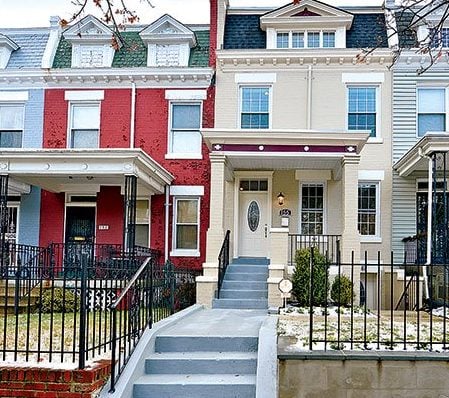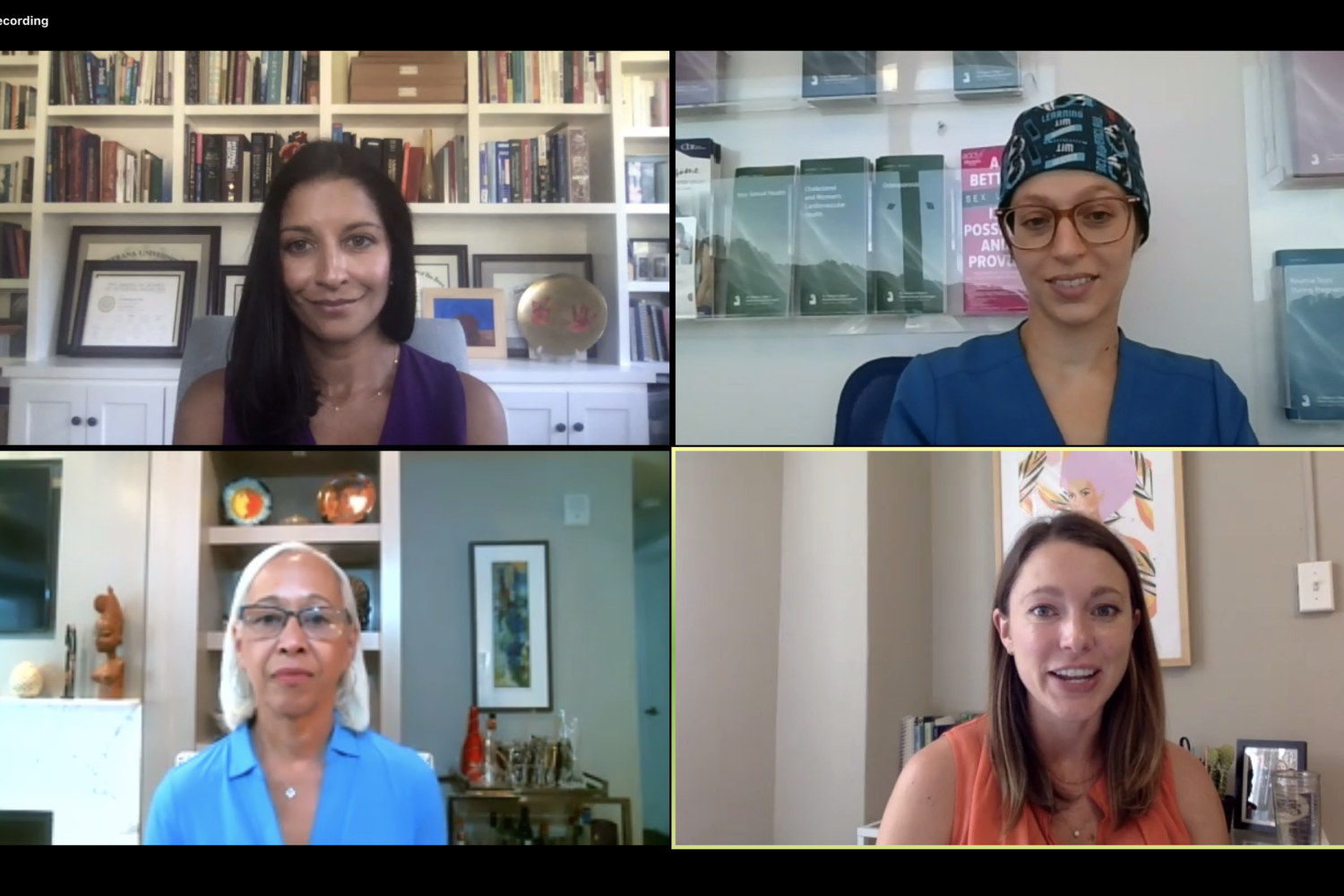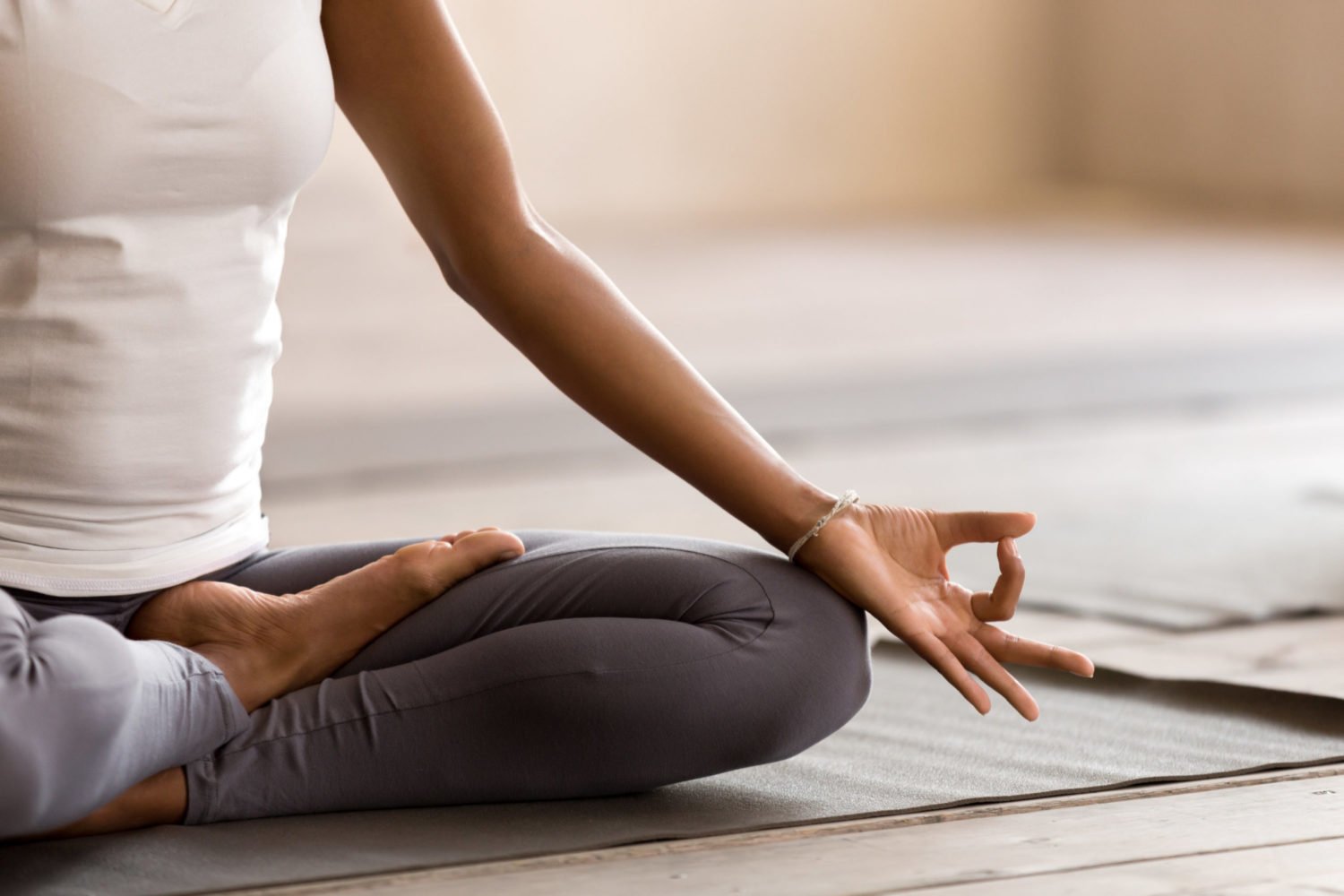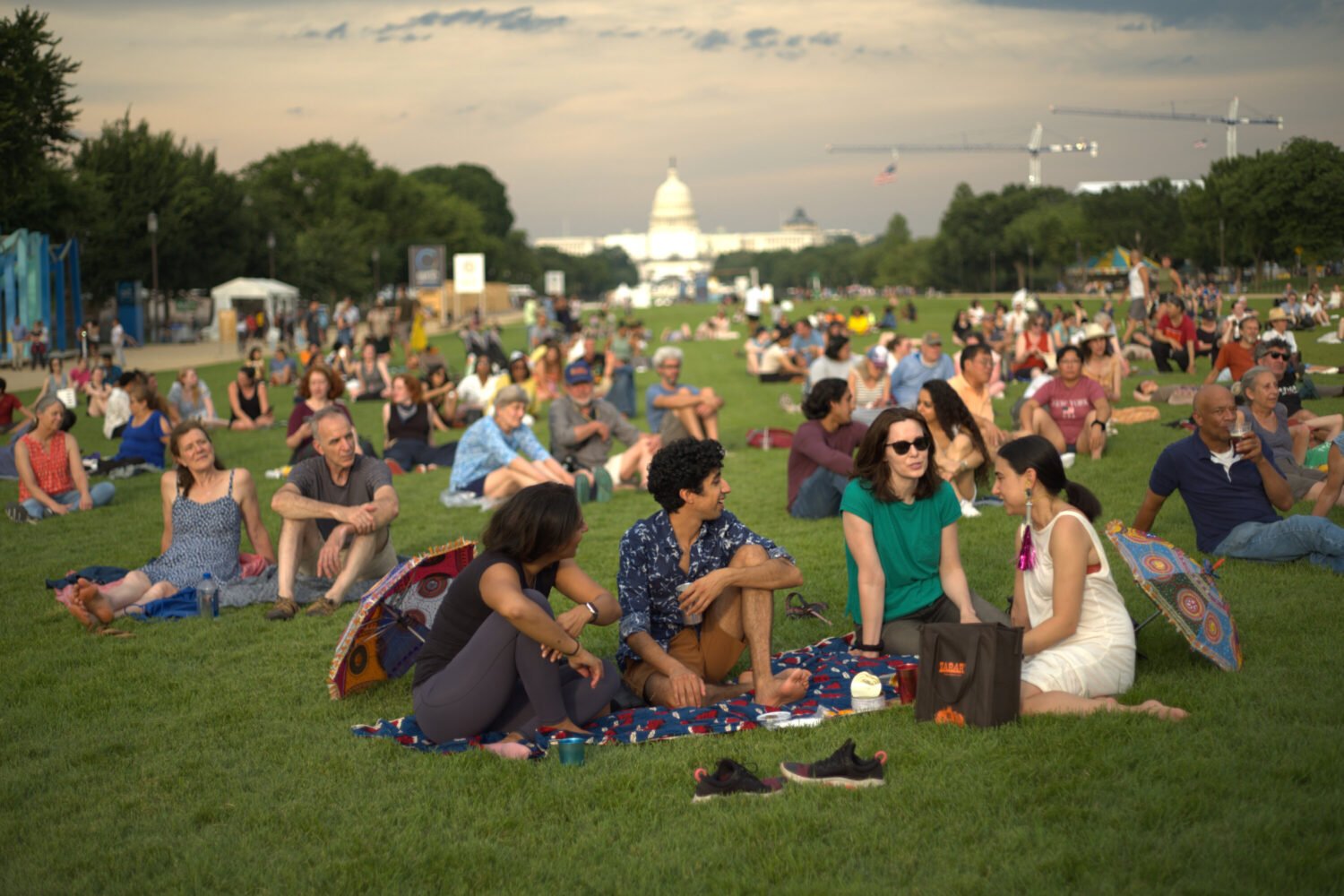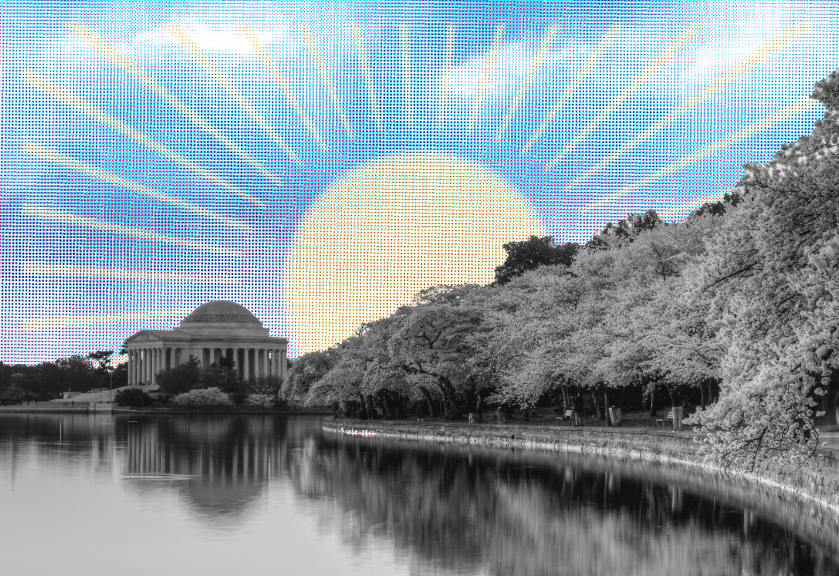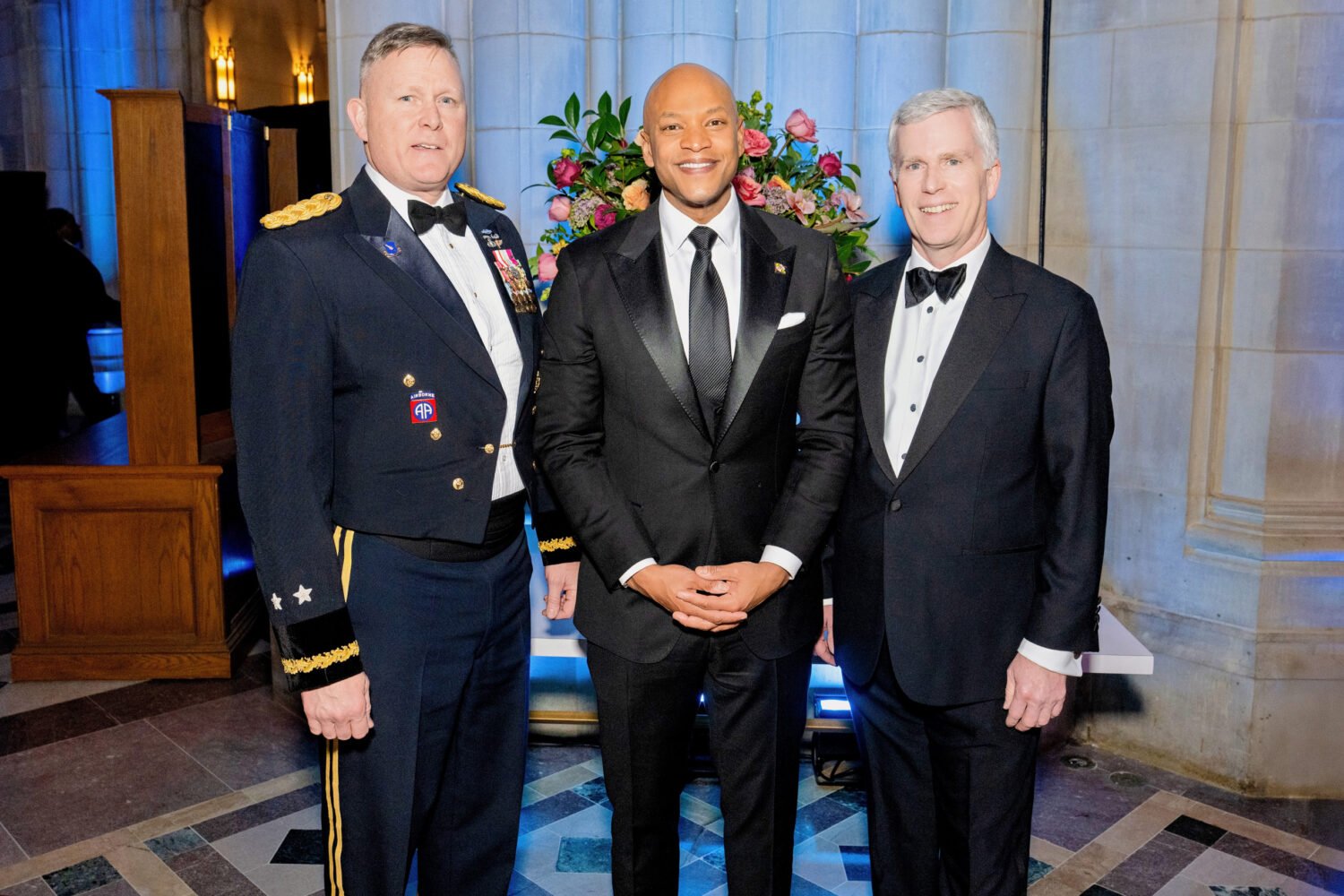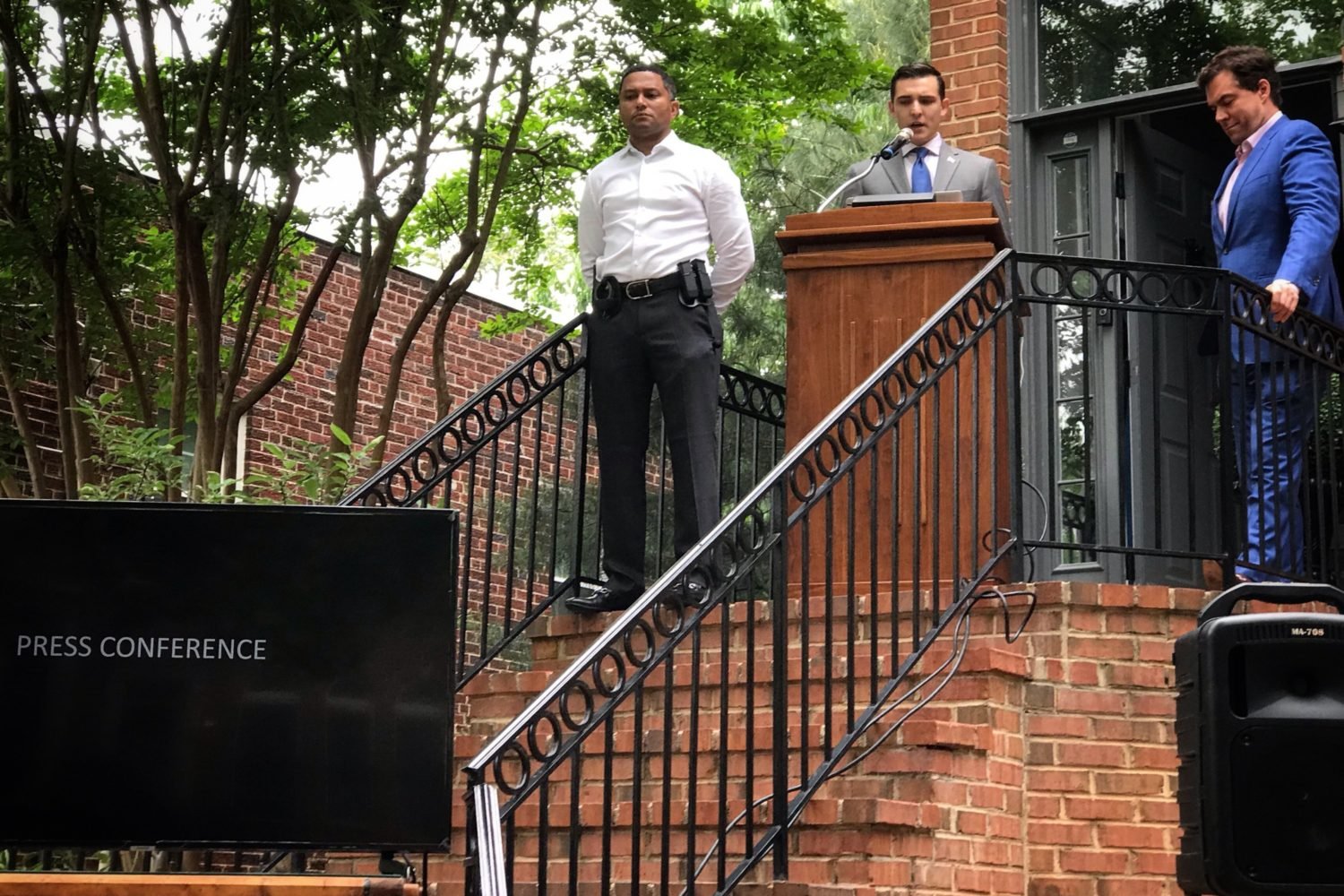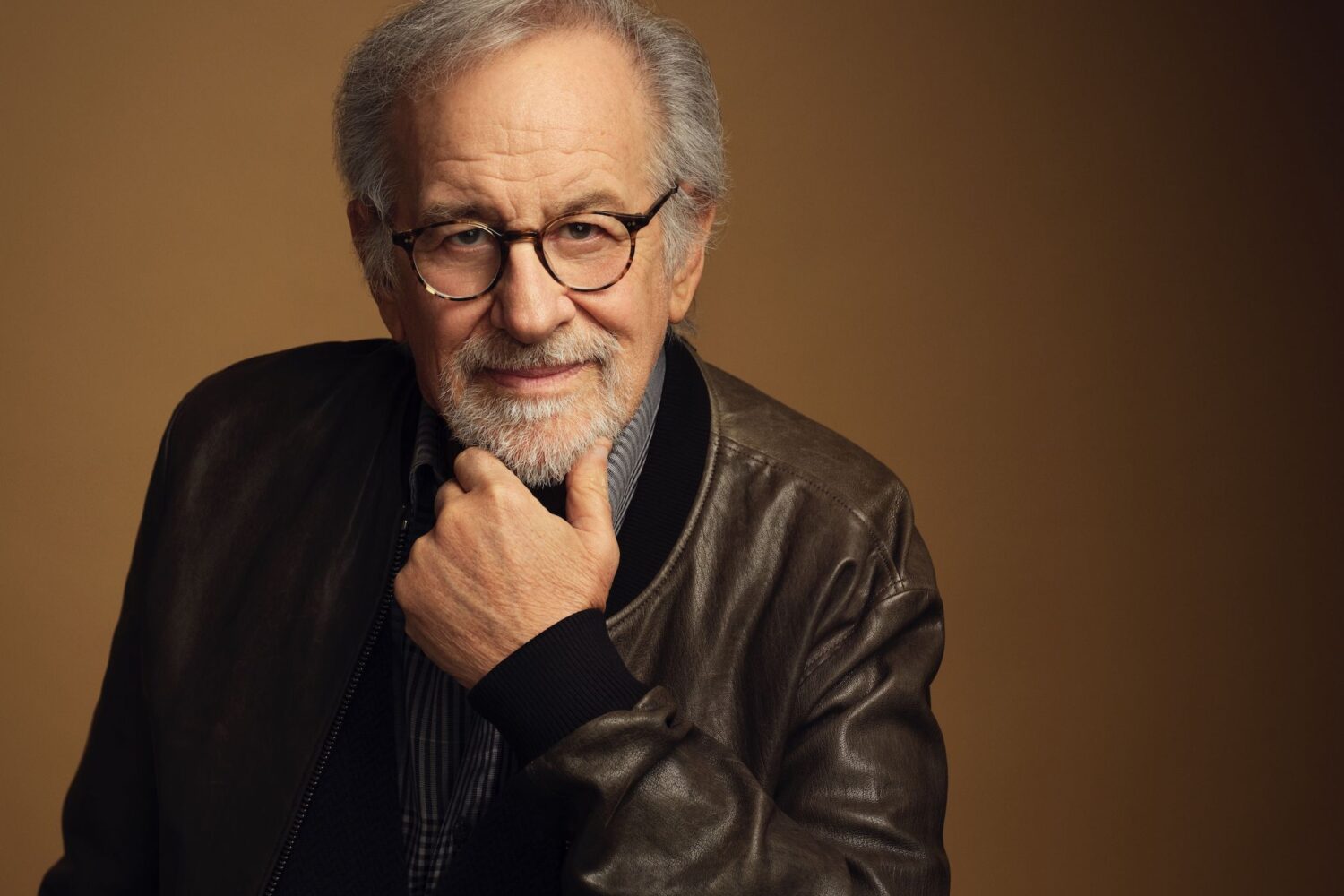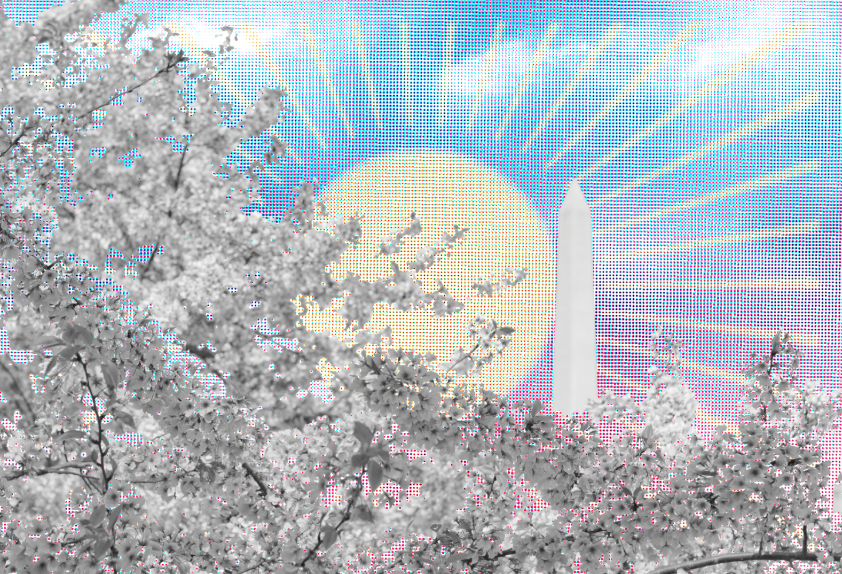President Richard Nixon and Chairman Mao Tse-tung were well aware that they were making history.
Both understood that Nixon’s February 1972 visit to China was important for its symbolism. It was the first visit of an American president to that country—an end to the long standoff where neither nation had recognized the other.
The first night of the visit, Prime Minister Chou En-lai invited Nixon to a banquet at the Great Hall of the People, a monstrous Stalinist structure that ran along one side of Tiananmen Square.
At the Great Hall, the Americans—from the President and Mrs. Nixon to the crew of their aircraft—walked into an enormous lobby, where Chou En-lai and his colleagues waited to greet them. Chairman Mao did not come out to such occasions.
Guests made their way up a grand staircase for photographs, then were ushered into a somber hall filled with round tables and decorated with Chinese and American flags. A Chinese military band started a medley of American folk songs. In imperial China, officials had always believed in using music to soothe visiting barbarians.
Mao had apparently approved the guests on the Chinese side. While there were representatives from the Beijing revolutionary committee—one of the organs created during the Cultural Revolution—none of the leading radicals was present. Even Mao’s wife, Jiang Qing, was absent. She later told the Nixons she had been ill.
The band played the Chinese and US national anthems, and the banquet began. The Nixons and top-ranking Americans sat with Chou En-lai at a table for 20; everyone else was at tables of ten. Each person had an ivory place card embossed in gold English and Chinese characters and chopsticks engraved with his or her name.
The Americans had been briefed on how to behave at Chinese banquets. Everyone had been issued chopsticks and urged to practice ahead of time. Nixon had become reasonably adept, but national-security adviser Henry Kissinger remained hopelessly clumsy. CBS News anchor Walter Cronkite shot an olive into the air.
As the band played “Oh! Susanna,” “Turkey in the Straw,” and that Cultural Revolution favorite “Sailing the Seas Depends on the Helmsman,” waiters brought dish after dish. Nixon—who had once ordered a White House banquet timed by stopwatch and had been delighted when it came in under an hour—had no complaints as the two former enemies celebrated a new relationship and the American networks covered it live for four hours.
The lazy Susans spun, laden with duck slices with pineapple, three-colored eggs, carp, chicken, prawns, shark fin, dumplings, sweet rice cake, fried rice, and in a nod toward Western tastes, bread and butter.
Some of the Americans—including John Holdridge, at the time a member of the National Security Council’s East Asia staff—spoke Chinese, and a few of the Chinese spoke English. Otherwise, conversation was through interpreters. Nixon and Chou En-lai exchanged desultory remarks through Mao’s favorite interpreter. Secretary of State William Rogers told long stories about his hero, golfer Sam Snead, to the Chinese foreign minister, a tough old revolutionary who had no idea what golf was. Mrs. Nixon asked her Chinese hosts such questions as how many children they had.
Chou En-lai, who was smoking Chinese cigarettes, turned to Mrs. Nixon and gestured to the picture of two pandas on the package. “We will give you two,” he said.
According to Chinese sources, Mrs. Nixon screamed with joy.
Although the Americans had dropped hints, the Chinese had been noncommittal on the pandas. The exchange of presents has always been important in diplomacy, and giving the right gifts—not too lavish, not too simple—has been an art the Chinese excelled at.
In imperial China, the emperors sent gifts—silks, brocades, porcelain—to other rulers as a mark of favor and to keep them quiescent. Communist China continued to send such gifts abroad—but now, as an indication of its revolutionary nature, to peoples, not rulers. In special cases, it also sent pandas, just as its predecessors had. Placid bears that spend most of their time eating or sleeping, pandas were perhaps meant to signal a peaceful relationship.
Empress Wu sent a pair to the emperor of Japan in the seventh century, and Chiang Kai-shek gave a pair to the United States during the Second World War. After 1949, the Communist Party sent pandas to the Soviet Union and North Korea as marks of friendship. Ling-Ling and Hsing-Hsing were now destined for the National Zoo in Washington.
The presents issue had caused anxiety in the White House, regarding both what to expect from the Chinese and what to give them. On Kissinger’s secret trip, in July 1971, he had taken along a piece of rock brought back from the moon by American astronauts. The Chinese had received it much as the Qianlong emperor had received British woolens brought by Lord Macartney—with a certain amount of disdain.
This time, the idea of giving medals in Lucite was considered and dropped. Finally, ceramic models of American birds were made for senior Chinese officials, while more junior ones got silver bowls, cigarette lighters, or cuff links with the presidential seal. Nixon also presented a pair of musk oxen and two large redwood trees from California.
Each person at the banquet had three glasses: one for water or orange juice, one for wine, one for China’s famous mao-tai—“white lightning” to American journalists or, as CBS’s Dan Rather put it, “liquid razor blades.”
At their table, Chou En-lai said proudly to Nixon that mao-tai, with its alcohol level of more than 50 percent, had been famous since the San Francisco World’s Fair of 1915. Chou took a match to his cup, saying, “Mr. Nixon, please take a look. It can indeed catch fire.”
Nixon said he understood that Red Army soldiers had once drained dry the town where mao-tai was produced.
“During the Long March, mao-tai was used by us to cure all kinds of diseases and wounds,” Chou answered.
“Let me make a toast with this panacea,” Nixon said.
Kissinger aide Alexander Haig, who had tried mao-tai on his advance trip to Beijing in January, had worried about its effect on Nixon. Under no repeat no circumstances, Haig had cabled, should the president actually drink from his glass in response to banquet toasts. “At banquets,” the White House had warned, “the wine and mao-tai are for toasting only. These glasses should not be raised without toasting one of your Chinese friends.”
With Chinese sitting at each table, the toasting started early. White House chief of staff Bob Haldeman, a teetotaler, tried to explain to his incredulous hosts that he couldn’t drink alcohol. John Holdridge found himself playing an old drinking game of counting fingers with the minister of electric power. The loser had to drain his glass to a shout of “Ganbei!”
“Aided only in part by the mao-tai,” Holdridge remembered, “the atmosphere in the Great Hall was electric. Surely everyone there, and every TV watcher, must have sensed that something new and great was being created in the US–China relationship.”
From their tables at the far end of the hall, the journalists—mostly American—stood on chairs and used field glasses to see the historic scene. Nixon had wanted them there, just as he had wanted live television coverage, because he understood their power. He read the daily summaries of press coverage and filled the margins with comments and orders. He wanted the journalists’ attention but not too much; as he told Haldeman, his image should be “more aloof, inaccessible, mysterious.”
Nixon despised most journalists as “clowns” who were liberal in their bias. He was convinced they hated him “because I have beaten them so often.” Early in his presidency, Nixon ordered senior staff to prepare lists of friends and foes among the press; the list of foes was much longer.
He intended to circumvent what he saw as the liberal establishment in the media and reach out directly to Middle America. With the powers of the presidency he could make news, whether by creating photo opportunities or going on the networks with major policy statements. He could also—and did—place wiretaps on reporters to see where they were getting their stories.
The camera, Nixon believed, was more effective for him than print. As Kissinger said unkindly, “Television in front of the President is like alcohol in front of an alcoholic.”
Though Chou En-lai had suggested to Kissinger, in their discussions on the President’s visit, that ten journalists might be the right number to accompany Nixon, the Americans had negotiated the number upward until they got permission to bring about 90. When some 2,000 applications came in, the White House announced criteria for selection. Nixon himself picked the journalists, making sure the television networks got more spaces than print journalists. He took pleasure in refusing places to papers like the New York Times. On his first trip to China, Kissinger had managed to warn Chou En-lai obliquely about talking to James Reston from the Times, who was about to arrive in Beijing.
A reporter from Newsday—who had just written a series investigating the complicated financial relations between Nixon and his banker friend Bebe Rebozo and who apparently met the criteria for going—was told “no room.” Several of the top network brass managed to get themselves accredited as technical staff, to the annoyance of the print journalists. Few of them, apart from writer Theodore White, had ever been to China.
Nixon, for all his distrust of the press, understood how important it was that his visit receive favorable coverage. With public opinion for so long hostile to Communist China, Americans still had to be convinced that their president was doing the right thing. Nixon was also conscious of his place in history.
When Kissinger made his second trip to China, in fall 1971, part of his mission was to discuss press coverage. White House staff reviewed the schedule for Nixon’s trip and checked out photo opportunities.
At the beginning of 1972, Alexander Haig spent a week in China working on the final arrangements with a party of technical experts. On February 1, an advance party of nearly 100 arrived in China to prepare for Nixon’s visit.
The Chinese expected to work with the advance team, but they were amazed by the planning. At the Beijing airport, the Americans worked out the best place for Nixon’s plane to land so that it would stop at the right distance and angle for good shots of his descent toward the reception party. The runway was measured and marked up with paint.
The Chinese had never seen a Xerox copier and were fascinated by the one the advance party brought. When the Americans realized that the Chinese were copying all their documents out by hand, they arranged to leave their copier behind.
China didn’t have the facilities to transmit to satellites or ways to ship film quickly out of the country. Nor were the Chinese media expected to get stories out fast. The senior Chinese journalist who was assigned to cover the Nixon visit remembered being struck by how quickly American journalists worked, how they used news flashes for a breaking story, and how one would write a lead paragraph and others finish up a story.
“We will have to compete in speed,” she told herself. “We will have to make some reforms in the way we do things.”
Back in the United States, the administration continued to try to add names to the list of journalists who would be arriving with the President. Some received special briefings. Beijing was cold in the winter, they were warned; many journalists rushed off to buy fur coats and long underwear. They should look after their health; if they went into a Chinese hospital, they might never come out.
Two chartered planes carried the reporters, camera crews, and their support staff, along with their briefing books and equipment, to China just ahead of Nixon. The journalists—including television stars such as Walter Cronkite and Eric Sevareid, author James Michener, and William F. Buckley Jr., a conservative the White House was wooing—traveled on one plane. Barbara Walters—then with the Today show and one of only three women in the group—was annoyed to be relegated to what was nicknamed the Zoo Plane, which carried photographers and technicians.
On the way to China, the journalists practiced using chopsticks. They played cards for the Chinese currency they had been issued. According to reporter Helen Thomas, some of her colleagues gave up drinking and immersed themselves in books and papers on China. As she said—in what was a common metaphor used by Americans from Nixon on down—visiting China was like going to the moon.
In Beijing, the press corps was housed near Tiananmen Square, in the cavernous Soviet-style Minzu Hotel. In the rooms—plainer than what most of the journalists were used to—candy, fruit, tea, and stamps had been laid out. In the bathrooms, wooden toilet seats had been freshly lacquered; unfortunately, the extract of sumac in the lacquer caused painful boils on those who were allergic to it. The advance party had already encountered what they’d nicknamed “baboon bottom.”
Partway through the banquet, Chou En-lai stepped onto the stage. Speaking through his interpreter, he welcomed President and Mrs. Nixon on behalf of Chairman Mao and the Chinese government. The President, Chou went on, was visiting China “at the invitation of the Chinese government.” This innocuous phrase had caused much difficulty on Kissinger’s first trip; the Chinese had wanted to make it look as though Nixon had asked to come to China.
The banquet, like Nixon’s trip, was about symbols, about handshakes and the exchange of toasts between leaders whose countries had for decades treated each other with suspicion. It was about status, about fears of being snubbed—as John Foster Dulles, Dwight Eisenhower’s secretary of State, had once snubbed Chou—and about losing or maintaining prestige in the eyes of the world.
It also carried echoes of the long and sometimes difficult relationship between the Chinese and foreigners. Chinese governments through the centuries had used rituals implying that their emperor had been chosen by heaven to rule the world and that all other rulers were his inferiors. Presents sent to the Chinese emperor and trade with China both were described as tribute.
It may not have been a realistic view of the actual relationships between China and foreign nations, but it was a powerful one. Inferior rulers—in other words, all those outside China—had to ask for permission to enter the emperor’s lands; they were not invited by the emperor, because that would have implied a relationship of equals.
Continuing his toast, Chou En-lai sounded a more modern note. In a reflection of the Chinese Communist view that the masses of the world would one day unite, he said that the Chinese people sent cordial greetings to the American people. Both peoples wanted a normalization of their relationship: “The people, and the people alone, are the motive force in the making of world history.”
Chou concluded: “We hope that, through a frank exchange of views between our two sides to gain a clearer notion of our differences and make efforts to find common ground, a new start can be made in the relations between our two countries.”
He lifted his glass to the Americans and Chinese in the room and to friendship between the two peoples. Coming down from the stage, Chou circled the tables of the official party, toasting each person in turn. One of the Americans noticed that he only touched his lips to his glass each time.
After a few more courses, it was Nixon’s turn. He wanted his toast to appear spontaneous even though he had been working on it for weeks. This had led to an awkward scene with Charles Freeman, his young interpreter from the State Department, just before the banquet.
Freeman, a cultivated and witty man from an old New England family, spoke fluent Mandarin. Although both Nixon and Kissinger disliked using State Department interpreters for fear they might leak information, Freeman was told earlier that evening that he would be interpreting for Nixon.
When Freeman asked for the prepared text of Nixon’s toast, Dwight Chapin, the appointments secretary, said there wasn’t one. Freeman pointed out that he had worked on earlier drafts and that he knew Nixon was planning to quote some of Chairman Mao’s poetry: “And if you think I’m going to get up in front of the entire Chinese Politburo and ad lib Chairman Mao’s poetry back into Chinese, you’re nuts.”
Ji Chaozhu, who was Chou En-lai’s interpreter, agreed to fill in, and Mao’s poetry was translated back into Chinese correctly. Nixon glowered at Freeman throughout the dinner, making him so nervous that he took up smoking again.
Two days later, after Freeman had shown his usefulness in interpreting, Nixon offered him a tearful apology and said to Chou En-lai that Freeman might well be the first American ambassador to China.
Chou muttered something that sounded to Freeman like “That’ll be the day.”
Nixon’s toast to Chou started with compliments to his hosts for their hospitality. The food was “magnificent,” as was the army band: “Never have I heard American music played better in a foreign land.” Like Chou, he admitted that there were many differences between China and the United States. Nevertheless, together both peoples could build a peaceful world, in which the young, like his own daughters, could be free from the fear of war.
“So, let us, in these next five days, start a long march together, not in lockstep, but on different roads leading to the same goal, the goal of building a world structure of peace and justice in which all may stand together with equal dignity and in which each nation, large or small, has a right to determine its own form of government, free of outside interference or domination.”
Coming to the passage that Freeman had dreaded, he quoted Mao: “Chairman Mao has written, ‘So many deeds cry out to be done, and always urgently. The world rolls on. Time passes. Ten thousand years are too long. Seize the day, seize the hour.’ ”
Nixon raised his glass to the absent Mao, to Chou En-lai, to the friendship of the Chinese and American peoples. The band struck up “America the Beautiful.” To the sound of music, the President did his round of toasts at the important tables.
“It was really quite spectacular,” Haldeman thought, watching Nixon. “He moved very forcefully, took a firm stand in front of the individual, looked him squarely in the eye, raised his glass and clinked the other person’s, took a quick sip, then he raised his glass again and gave a little staccato bow to the individual, and then he turned, marched to the next individual, and repeated the performance.”
Not everyone shared Haldeman’s pleasure. “The effect,” William F. Buckley wrote, “was as if Sir Hartley Shawcross had suddenly risen from the prosecutor’s stand at Nuremberg and descended to embrace Goering and Goebbels and Doenitz and Hess, begging them to join with him in the making of a better world.”
According to Chinese custom, the banquet ended abruptly with the last course. Guests hurried to the cars, and journalists rushed to file their stories. A famous American television reporter ran after a bewildered Qiao Guanhua, the vice foreign minister, trying to get an exclusive interview.
“I’m Eric Sevareid,” he announced to a man who had probably never heard of him.
John Burns, a Canadian journalist, took Nixon’s chopsticks as a souvenir. Although a New York dealer sent a cable with an offer of $10,000, Burns kept them.
Back at his guesthouse, a euphoric Nixon called Haldeman and Kissinger into his bedroom to go over the events of the first day in China, from the arrival to his meeting with Mao and finally the banquet. To Nixon’s pleasure, Haldeman reported that the press coverage so far had been good.
The President, Haldeman wrote in his diary, “finally decided to fold up for the day after we reviewed the schedule for the week again, and that’s the end of a very memorable day in American history.”

